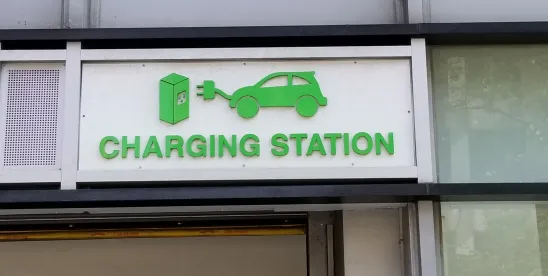There is a lot of buzz around clean technology, distributed energy resources (DERs), microgrids, and other technological innovations in the renewable energy and clean transport industries, and how these developments can contribute to solving longstanding environmental justice issues. As these innovations develop, energy markets will undergo substantial changes to which consumers and industry participants alike will need to adapt and leverage. Every other week, K&L Gates’ The Energizer will highlight emerging issues or stories relating to the use of DERs, energy storage, emerging technologies, hydrogen, and other innovations driving the energy industry forward.
DEPARTMENT OF ENERGY ANNOUNCES $3.1 BILLION IN MATCHING GRANTS TOWARD DEVELOPMENT OF DOMESTIC BATTERY SUPPLY CHAIN
On 2 May 2022, the U.S. Department of Energy announced that $3.1 billion of funding will be available to support development of the domestic battery manufacturing and recycling industry. The funds will be provided as grants that will support manufacturing, processing, and recycling, and will accelerate the development of new, retrofitted, and expanded commercial facilities and innovative technologies. The grants will be structured as matching grants that will be limited to matching the funding provided by private investors, and will require a minimum $50 million investment. An additional $60 million of grants will fund second-life electric vehicle battery applications, as well as processes to recycle materials back into the battery supply chain.
This grant program will bolster battery manufacturing capabilities in the United States, while also promoting a circular economy that is less reliant on foreign suppliers and materials. The funding is part of the Infrastructure Investment and Jobs Act that was signed into law on 5 November 2021 and provides $1 trillion of spending, including a total appropriation of $7 billion to scale the domestic battery supply chain. Last year, the Biden administration established a goal of 50% of new vehicle sales to be electric vehicles by 2030. Recently, on 31 March 2022, President Joe Biden signed the Defense Production Act Title III Determination that would permit the U.S. Department of Defense to use Title III of the Defense Production Act to increase domestic mining and processing of critical materials for the battery supply chain, including lithium, nickel, cobalt, graphite, and manganese, with an emphasis on improving mining processes to responsibly produce and process battery materials. The development of a robust and sustainable domestic supply chain would be an important step toward capturing the economic benefits of the transition to electric vehicles.
ACES PROJECT IS GREENLIT BY U.S. DEPARTMENT OF ENERGY
On 26 April 2022, the U.S. Department of Energy’s Loan Programs Office issued a conditional commitment for a $504.4 million loan guarantee to the Advanced Clean Energy Storage (ACES) Project. The ACES Project was launched in 2019, and will be located in Delta, Utah. It is the product of a joint venture with Mitsubishi Power Americas (manufactures turbines and other energy industry infrastructure) and Magnum Development (develops salt caverns used for hydrogen storage).
When built, the ACES Project will comprise 220 megawatts of electrolyzers that will use carbon-free alkaline electrolysis to transform water to up to 100 metric tons of hydrogen a day. The hydrogen will be stored in two large underground salt caverns that each will be able to hold up to 5,500 metric tons of hydrogen, the equivalent of 300 gigawatt hours of electricity.
This hydrogen bank would be one of the largest hydrogen deployments in the world. This will undoubtedly accelerate the distribution of the commercial hydrogen sector. Further, the ACES Project could help stop the curtailment of renewable energy in certain areas of the United States that are currently struggling to find ways to store renewable energy.
NATIONAL LABORATORY MAKES HEADWAY IN LONG-TERM RECHARGEABLE BATTERIES
On 20 April 2022, the Pacific Northwest National Laboratory (PNNL) announced the development of a freeze-thaw molten salt battery for seasonal storage. PNNL successfully demonstrated how freezing and thawing a molten salt solution creates a rechargeable battery capable of storing energy for an extended period without the high cost typically associated with energy storage. PNNL’s research demonstrations target utility-scale and industrial uses.
Scientists at PNNL specifically targeted reduction of self-discharge, a common issue in conventional batteries. With this breakthrough, the new battery only loses charge during a period when it is also charging. Freeze-thaw batteries also allow for charged energy to be stored for months at a time and allow 90 percent of stored charge to be recovered. This development of an affordable, rechargeable battery is consistent with the U.S. government’s goal to decrease carbon emissions in half by 2030.






 />i
/>i
